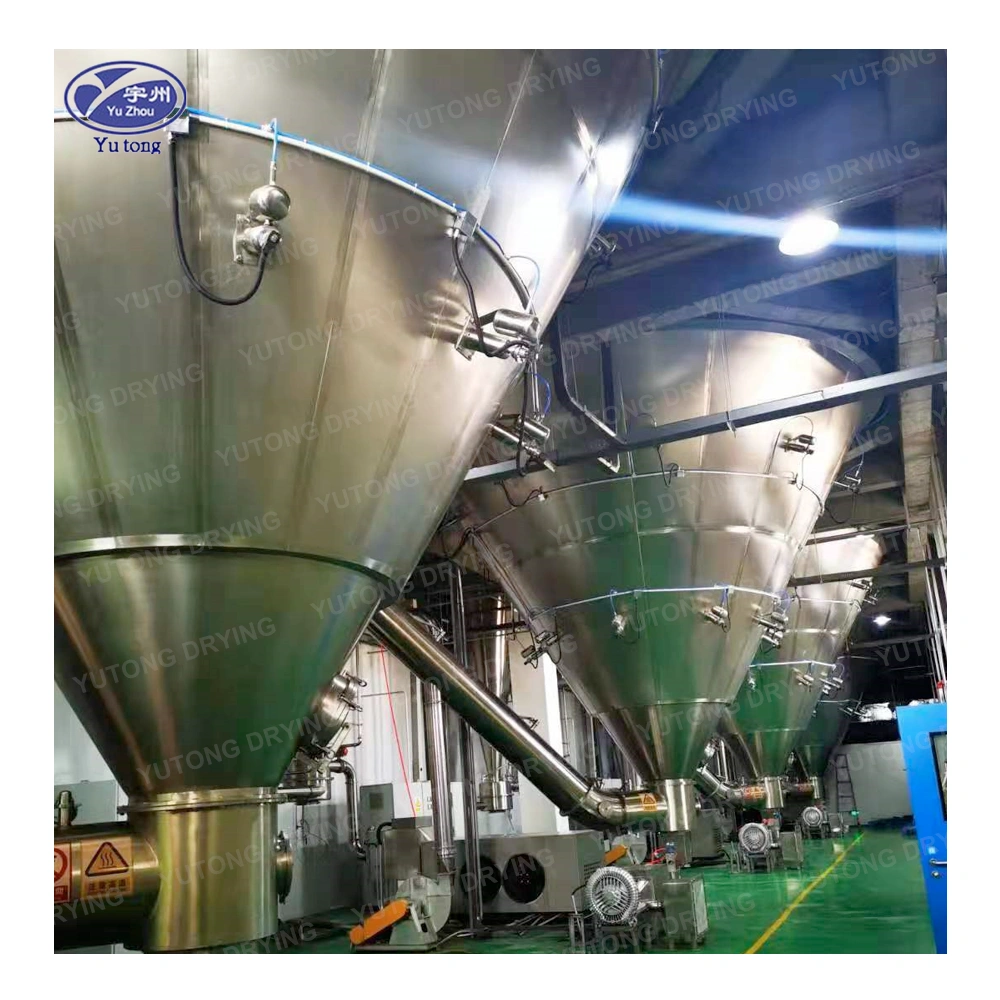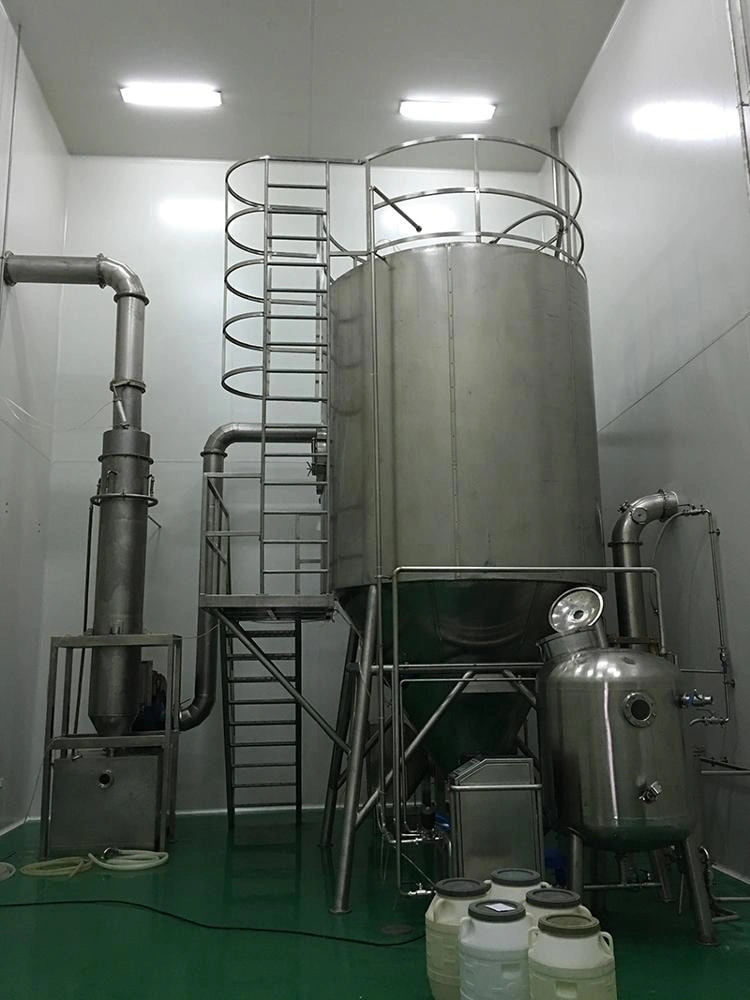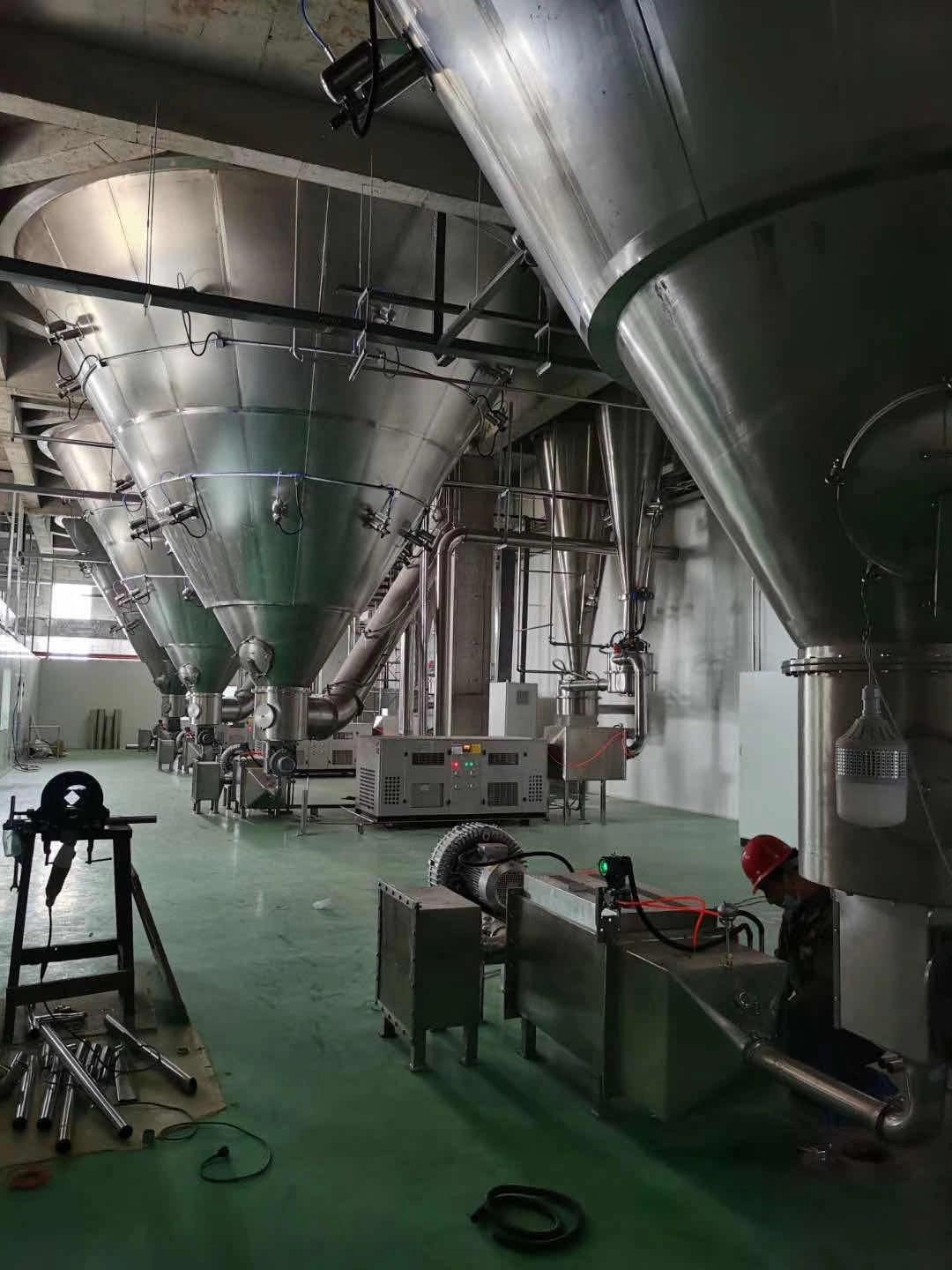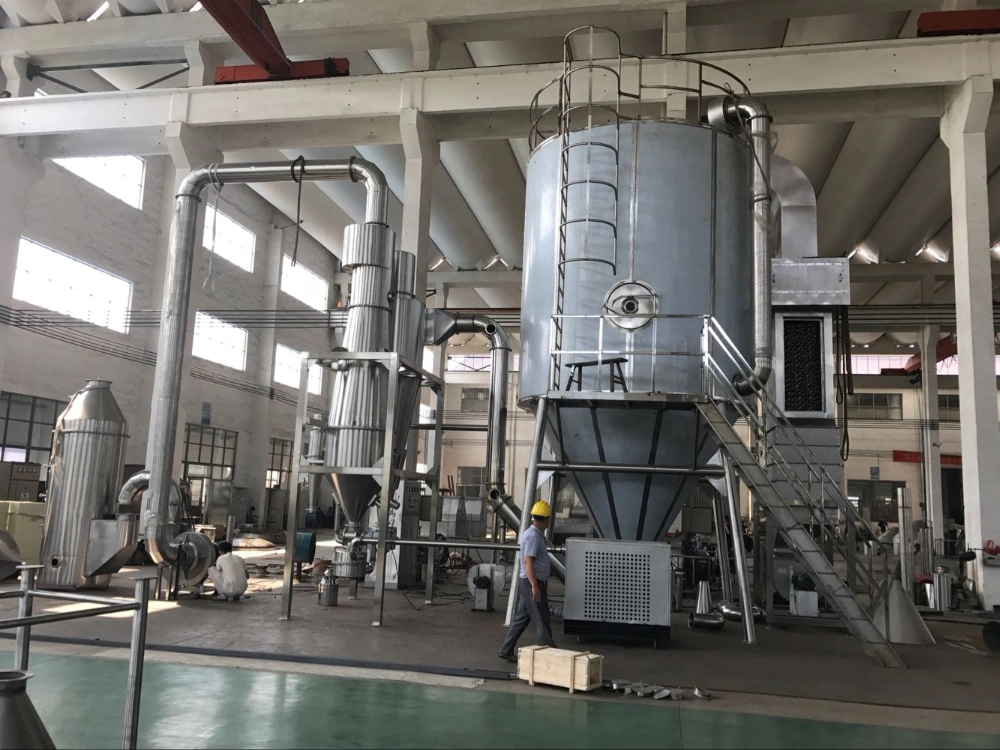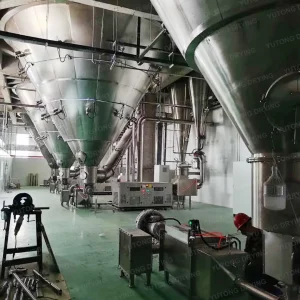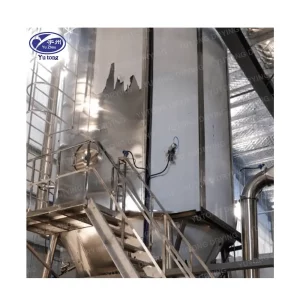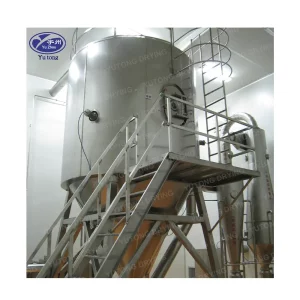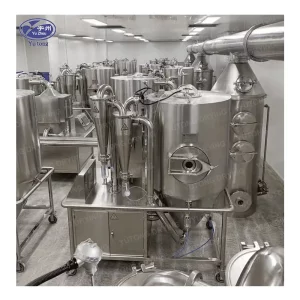Table of Contents
Product Detail
In the world of industrial drying, spray dryers stand as a pivotal technology. They convert liquid into dry powder in one swift process, making them invaluable across various sectors such as food, pharmaceuticals, and chemicals. If you’re an inventor or a business looking to innovate in this field, understanding the nuances of securing a spray dryer patent is essential. This guide will walk you through the process, considerations, and benefits of obtaining a patent for your spray dryer innovation.
Understanding Spray Dryers
Spray dryers are devices that use hot gas to dry liquid material into a powder form. The process begins with atomizing the liquid into fine droplets, which are then introduced into a hot drying medium. The moisture evaporates rapidly, leaving behind dry particles. This process is efficient and helps maintain the quality of the original product, making it crucial in industries where preserving flavor, color, or nutritional value is essential.
The Atomization Process
The atomization process is the initial and most crucial step in spray drying. It involves converting the liquid feed into fine droplets, which significantly increases the drying surface area. Atomizers can be designed in various forms, such as rotary or nozzle types, each offering different advantages depending on the application. Understanding the mechanics of atomization is essential for optimizing the drying process and ensuring product quality.
Drying Chamber Dynamics
The drying chamber is where the magic happens. It is designed to facilitate rapid moisture evaporation while minimizing heat damage to sensitive materials. The design and size of the chamber can vary significantly based on the intended application and the nature of the material being dried. Proper airflow management within the chamber is critical to achieving uniform drying and preventing particle agglomeration.
Role of the Air Heater
The air heater is a critical component that provides the necessary thermal energy for the drying process. It must be capable of maintaining a consistent and controllable temperature to ensure efficient drying without degrading the product. Advances in energy-efficient heating technologies can offer significant innovation opportunities in this area, potentially reducing operational costs and environmental impact.
Cyclone Separator Efficiency
The cyclone separator plays a vital role in collecting dried particles from the air stream. It must be designed to maximize particle recovery while minimizing product loss. A cyclone separator’s efficiency depends on factors such as its geometry, air velocity, and particle size distribution. Innovations in separator design can enhance the overall efficiency of the spray dryer system.
Managing Exhaust Systems
The exhaust system removes moisture-laden air from the drying chamber. It must be designed to handle high airflow rates while ensuring environmental compliance. Effective exhaust management is crucial for maintaining a safe and efficient drying environment and minimizing emissions. Innovations in exhaust systems can contribute to improved sustainability and operational efficiency.
Why Patent a Spray Dryer?
A patent grants the inventor exclusive rights to their invention, preventing others from making, using, or selling it without permission. Here are some reasons why securing a patent for your spray dryer is beneficial:
Protection of Intellectual Property
Securing a patent provides legal protection for your innovation, safeguarding your intellectual property against unauthorized use or replication. This protection is crucial for maintaining a competitive edge in the market and preventing others from capitalizing on your hard work and creativity. A patent acts as a powerful deterrent against potential infringement and provides a legal framework for pursuing violators.
Gaining a Market Advantage
Having a patented spray dryer can significantly enhance your market position by differentiating your product from competitors. It signals to customers and partners that your technology is unique and cutting-edge, potentially leading to increased sales and market share. A patented innovation can also serve as a key selling point in negotiations with potential partners or investors.
Unlocking Revenue Opportunities
Patenting your spray dryer opens up new revenue streams through licensing agreements or strategic partnerships. By allowing others to use your technology under a licensing agreement, you can generate additional income while expanding the reach of your innovation. This can be especially beneficial for small businesses or startups looking to maximize the impact of their inventions.
Enhancing Company Credibility
A patent can significantly boost your company’s reputation as an innovator and leader in the industry. It demonstrates a commitment to advancing technology and solving complex challenges, which can attract new customers and partners. A strong patent portfolio can also enhance investor confidence and support future growth and expansion efforts.
Conducting a US Patent Search for Spray Dryers
Before applying for a patent, it’s crucial to conduct a comprehensive US patent search. This step helps determine if your invention is novel and not already patented. Here’s how to proceed:
Utilizing the USPTO Database
The United States Patent and Trademark Office (USPTO) provides an online search tool that is invaluable for conducting a patent search. By using specific keywords and filters, you can explore existing patents related to spray drying technology. This search will help identify any prior art that might affect the novelty of your invention.
Exploring Similar Technologies
In addition to searching for direct spray dryer patents, it’s essential to explore related technologies and components. This includes examining patents for atomizers, drying chambers, and air heaters, among others. Understanding the landscape of associated technologies can reveal opportunities for differentiation and innovation.
Analyzing Schematic Diagrams
Examining the schematic diagrams included in existing patents can provide insights into current design trends and engineering solutions. By comparing these diagrams to your innovation, you can identify unique aspects of your design that can strengthen your patent application. This analysis can also inspire further refinements and enhancements to your invention.
The Patent Application Process
Once you’ve confirmed the novelty of your spray dryer innovation, it’s time to navigate the patent application process. Here’s a step-by-step guide:
1. Prepare Your Application
- Detailed Description: Clearly outline your invention, its components, and the innovative aspects. A comprehensive description is crucial for demonstrating the uniqueness of your spray dryer.
- Drawings and Diagrams: Include detailed schematic diagrams that illustrate the design and functionality of your spray dryer. Visual aids can significantly enhance the clarity and impact of your application.
- Claims: Define the scope of your patent. Be specific about what makes your invention unique, and ensure that your claims accurately reflect its innovative features.
2. Submit Your Application
- Choose the Right Type: Decide between a utility patent (for new processes or machines) or a design patent (for new designs). Each type has specific requirements and benefits, so choose carefully based on your invention’s characteristics.
- File with the USPTO: Submit your application online or by mail. Ensure all documents are complete and accurate to avoid delays in the processing of your application.
3. Examination Process
- Patent Examiner Review: A USPTO examiner will review your application to ensure it meets all legal requirements. This review process is thorough and can take several months to complete.
- Respond to Inquiries: Be prepared to provide additional information or clarifications if requested by the examiner. Prompt and accurate responses can expedite the examination process.
4. Approval and Issuance
- Patent Grant: Once approved, you’ll receive a patent grant, officially protecting your invention. This grant confers exclusive rights to your innovation, allowing you to enforce your patent against infringers.
- Maintenance: Pay maintenance fees to keep your patent active and enforceable. Failure to pay these fees can result in the expiration of your patent rights.
Tips for a Successful Patent Application
- Consult a Patent Attorney: Navigating the patent process can be complex. A patent attorney can offer valuable guidance and ensure your application is robust. Their expertise can also help avoid common pitfalls and improve the chances of a successful outcome.
- Focus on Specific Innovations: Highlight what sets your spray dryer apart, whether it’s efficiency, design, or technology. Clearly, articulating these innovations in your application can strengthen your patent claims.
- Stay Informed: Keep up with industry trends and advancements to ensure your innovation remains relevant and competitive. Continuous improvement and adaptation are key to maintaining a leading edge in the market.
Conclusion
Securing a spray dryer patent is a strategic move that can protect your innovation, enhance your market position, and provide new revenue opportunities. By understanding the components of a spray dryer, conducting a thorough patent search, and carefully navigating the application process, you can successfully patent your invention and reap the benefits of your hard work and ingenuity.
With these steps, you’re well on your way to making a mark in the world of industrial drying technology. Whether you’re a seasoned investor or new to the field, the path to patenting a spray dryer is a rewarding journey that can lead to significant advancements and success. Embrace the challenges and opportunities that come with innovation, and your efforts will be well rewarded.
Specifications
|
spec
|
ZPG-25
|
ZPG-50
|
ZPG-80
|
ZPG-100
|
ZPG-150
|
ZPG-200
|
ZPG-300
|
|
|
evaporation capacity(kg/h)
|
25
|
50
|
80
|
100
|
150
|
200
|
300
|
|
|
process amount of material liquid(kg/h)
|
25-34
|
50-68
|
80-108
|
100-135
|
150-203
|
200-270
|
300-406
|
|
|
output of finished pcoduct(kg/h)
|
4.8-7.2
|
9.2-14
|
14.8-22.4
|
18.4-28
|
24-42
|
36.8-56.4
|
55-85
|
|
|
solid content of material liquid( %)
|
18-30
|
|||||||
|
moisture content of finished product( %)
|
3-5
|
|||||||
|
electric power(kw)
|
63
|
132
|
153
|
204
|
246
|
330
|
||
|
heat source
|
Steam pius electricity
|
|||||||
|
Collecting method of product and its efficiency
|
Grade one or two or three stage cyclone wet dust remover is greater than or equal to 95%
|
|||||||
|
automatic control meters and instruments
|
indicator of not air and exhaust air temperature
|
|||||||
|
temperature of air inlet(℃)
|
160-220
|
|||||||
|
temperature of air outlet(℃)
|
80-100
|
|||||||
|
L
|
7000
|
8000
|
9800
|
11000
|
12200
|
14100
|
15000
|
|
|
overal dimensions(mm)
|
W
|
4000
|
5000
|
5700
|
6200
|
7000
|
7800
|
9000
|
|
H
|
6200
|
6900
|
8000
|
8900
|
10750
|
11900
|
13000
|
|
Applications
Applicable Industries: Building Material Shops, Manufacturing Plant, Machinery Repair Shops, Food & Beverage Factory, Farms, Restaurant, Retail, Food & Beverage Shops

